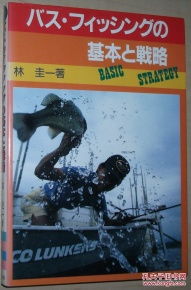Content:

Winter bass fishing can be a challenging yet rewarding experience. The cold temperatures and slower fish activity require anglers to adapt their techniques and strategies to catch bass during the colder months. One of the most crucial aspects of winter bass fishing is mastering the art of baiting. Here are some essential techniques to help you improve your winter baiting skills and increase your chances of landing a winter bass.
Choose the Right Location: In winter, bass tend to move to deeper, warmer waters. Look for areas like deep weed beds, drop-offs, or submerged structures where bass can find protection from the cold. Utilize your fishfinder to locate these prime spots and focus your baiting efforts there.
Understand Bass Behavior: During winter, bass are less active and tend to feed less frequently. To attract them, you need to present your bait in a way that triggers their natural instincts. Understanding bass behavior in winter can help you choose the right bait and presentation technique.
Select the Right Bait: In cold water, bass may not be as aggressive, so using smaller baits is often more effective. Soft plastics, like small worms, grubs, or finesse jigs, are great choices. These baits allow for subtle movements that can trigger a bite in inactive fish.
Use a Winter-Friendly Presentation: The key to winter fishing is to be patient and work slowly. Here are some presentation techniques to consider:
a. Trolling: Trolling can be effective in winter, especially in deeper waters. Use a slow retrieve with soft plastics or spinnerbaits to cover water and find active fish.
b. Jigging: Jigging is a great technique for cold water bass fishing. Work a jig slowly and steadily, allowing it to fall to the bottom before lifting it back up. This action can mimic a struggling baitfish and trigger a strike.
c. Finesse Techniques: Use a slow and steady retrieve with soft plastics, such as a Texas-rigged worm or a finesse rig. This subtle action can attract bass that are less likely to chase down a moving bait.
Adjust Your Baiting Strategy: Since bass are less active in winter, it's essential to be patient and give your bait time to work. Here are some tips for adjusting your baiting strategy:
a. Longer Casting: Cast your bait further out and allow it to sink deeper into the water column. This gives the bait more time to reach the fish and increases your chances of a strike.
b. Multiple Bait Options: Have multiple baits on hand and switch between them if you're not getting bites. Sometimes, a different color or style of bait can make the difference in winter fishing.
c. Stay on the Water: Winter bass fishing can be slow, so it's important to stay on the water and be persistent. The longer you fish, the better your chances of catching a bass.
Maintain Your Equipment: Cold weather can be tough on your fishing gear. Make sure to keep your line, hooks, and lures in good condition. Regularly check your equipment for signs of wear and tear, and replace any damaged items before heading out on the water.
Stay Warm and Comfortable: Dress in layers to stay warm and comfortable while fishing. Wear a good-quality waterproof jacket, thermal undershirts, and insulated boots. Don't forget to protect your hands and head with gloves and a hat.
In conclusion, winter bass fishing requires a different approach compared to warmer months. By mastering the art of baiting and adapting your techniques to the cold water conditions, you can increase your chances of landing a winter bass. Remember to choose the right location, understand bass behavior, select the appropriate bait, and use winter-friendly presentation techniques. With patience and persistence, you'll be well on your way to catching bass in the coldest months of the year.












